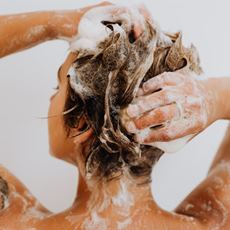Hazardous Ingredients in Beauty Products Marketed to Black Women
Unsafe Cosmetics
Fact Checked
×All the content published in our website is fact checked to validate its accuracy.
Visit our guidelines web page to learn more about our strict processes regarding how we review our content's sources: reliable and reputable journals, media websites, universities, colleges, organizations, and professionals.
Our articles are based on scientific evidence, and the references are included in its footnotes, which are clickable links to sound scientific papers.
First published: 18. Feb.2025
Overview
A study published on Feb. 11th, 2025 reported that personal care products sold to the Black woman market segment contain ingredients with a higher hazard score than products without demographic marketing. This exposes Black women to health risks as they tend to use "unsafe" personal care products like skin-lightening products, lotions with fragrances, and hair straighteners. Here you will find some beauty care safety tips.
References and Further Reading
(1) Kaley Beins, Alexa Friedman, Hong Lin, Kristian Edwards, (20205. Higher hazards persist in personal care products marketed to Black women, report reveals . Environmental Working Group. February 11, 2025. Accessed Feb. 18, 2025
(2) James-Todd, T., Meeker, J., Huang, T. et al., (2017). Racial and ethnic variations in phthalate metabolite concentration changes across full-term pregnancies. J Expo Sci Environ Epidemiol 27, 160–166 (2017). https://doi.org/10.1038/jes.2016.2
(3) Vy Kim Nguyen, Adam Kahana, Julien Heidt, Katelyn Polemi, Jacob Kvasnicka, Olivier Jolliet, Justin A. Colacino, (2020). A comprehensive analysis of racial disparities in chemical biomarker concentrations in United States women, 1999–2014. Environment International, Vol 137, 105496, ISSN 0160-4120, https://doi.org/10.1016/j.envint.2020.105496
(4) Chan M, Parikh S, Shyr D, Shamasunder B, Adamkiewicz G, James-Todd T., (2020). Evaluating Neighborhood-Level Differences in Hair Product Safety by Environmental Working Group Ratings among Retailers in Boston, Massachusetts. Environ Health Perspect. 2023 Sep;131(9):97002. doi: 10.1289/EHP10653. Epub 2023 Sep 13. PMID: 37702490; PMCID: PMC10498863
About this Article
Hazardous Ingredients in Beauty Products Marketed to Black Women, A. Whittall
©2025 Fit-and-Well.com. First Published: 18.Feb.2025. Update scheduled for 18.Feb.2028. https://www.fit-and-well.com/wellness/hazardous-ingredients-in-cosmetics.html
Tags: cosmetics, skin, obesogens, chemicals, hair cosmetics, hair.



